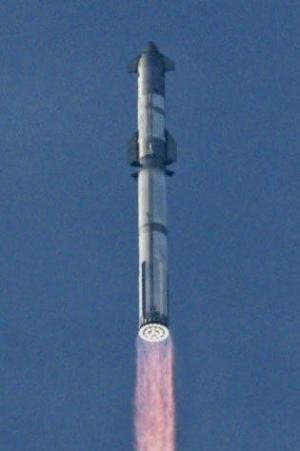SpaceX's Starship, hailed as the world's mightiest rocket, soared to unprecedented heights and speeds during its third test flight on Thursday. However, the triumph was marred by its loss upon re-entry over the Indian Ocean, SpaceX confirmed.

The liftoff occurred from the Starbase in Boca Chica, Texas, at approximately 8:25 am local time (1325 GMT). The event was broadcasted live on a widely-viewed webcast via social media platform X. This sleek behemoth of a rocket holds paramount importance in NASA's aspirations to land astronauts on the Moon in the coming decade and aligns with Elon Musk's grand vision of Mars colonization.
Following the successful test flight, NASA administrator Bill Nelson expressed his congratulations to SpaceX via Twitter.
Thursday's launch was closely watched, especially after two previous attempts ended in fiery explosions. Nonetheless, such setbacks are integral to SpaceX's rapid development approach, which prioritizes trial and error for accelerated progress.
SpaceX Starship, when fully assembled, stands tall at 397 feet (121 meters), surpassing the Statue of Liberty by a comfortable margin of 90 feet. Its Super Heavy Booster generates a staggering 16.7 million pounds (74.3 Meganewtons) of thrust, nearly twice that of NASA's Space Launch System, although the latter is now certified, unlike Starship, which remains in its prototype phase.
The latest test marked Starship's most ambitious trial yet, with the rocket meeting many of its objectives. These included the successful opening and closing of Starship's payload door to simulate satellite deployment into orbit.
High-definition footage captured from an onboard camera showcased Starship gliding in space, against the backdrop of Earth's curvature. It achieved a peak velocity exceeding 26,000 kilometers per hour (16,000 mph) and reached an altitude surpassing 200 kilometers above sea level.
After traveling halfway around the globe, Starship initiated its descent over the Indian Ocean, with engineers cheering as its heat shield, comprising 18,000 hexagonal tiles, glowed red-hot.
The flight demonstrated remarkable progress for SpaceX, despite the unfortunate loss during re-entry. It signifies a significant step forward in the pursuit of advanced space exploration technology.









